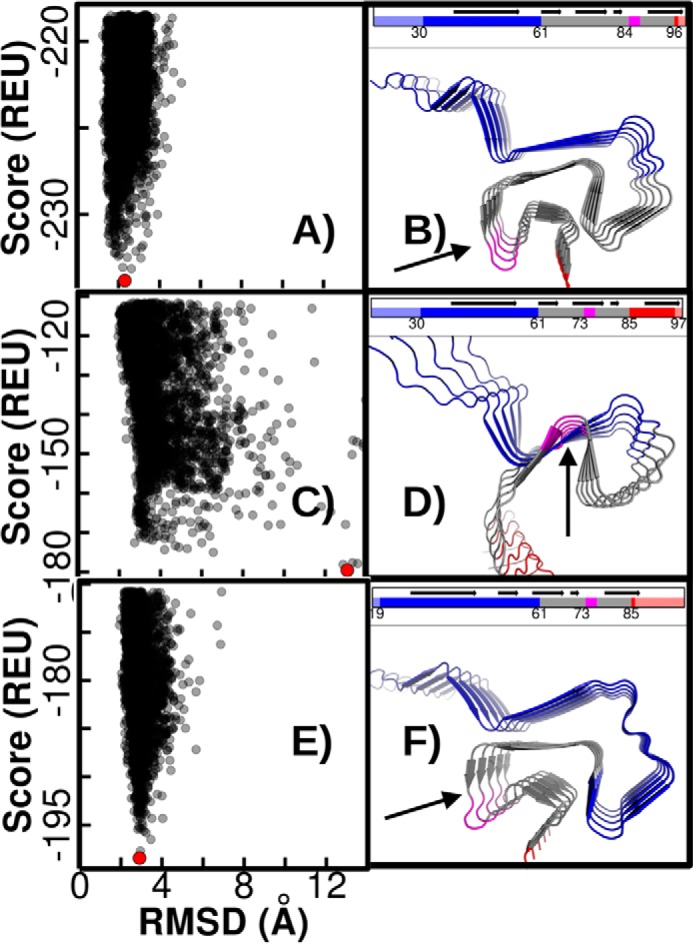Figure 7.

Rosetta energy landscapes for the αS and βS Greek-key architectures. A, Rosetta score (in Rosetta energy units, REU) versus r.m.s.d. (Å) for the ssNMR-derived αS structure showing a robust funnel. The lowest energy structure is indicated by a red point, and in B the lowest energy structure identified in the simulation is pictured. The N terminus is colored blue; the NAC is colored gray; and the C terminus is red. Trailing ends of the N and C termini are shown in light blue and red, respectively. The GAG-turn compatible motif is highlighted in magenta. Rosetta simulations using a threading in which residues 30–97 from βS are N-terminally aligned with corresponding residues from αS show a lack of stable energy funnel, and higher energy values (C) and a large deviation from the Greek-key ssNMR structure (D). A C-terminally aligned threading for the βS(19–86), which incorporates more of the N-terminal domain in the Greek-key, results in a more stable form compared with the βS(30–97) threading. A robust energy funnel, albeit with increased energy values compared with αS, is restored (E), and the lowest energy structure has a low r.m.s.d. from the Greek-key structure (F).
